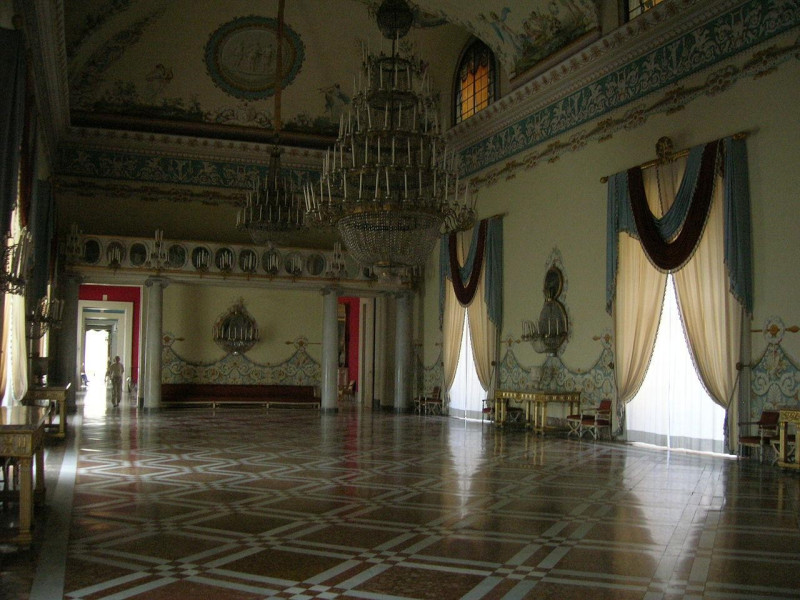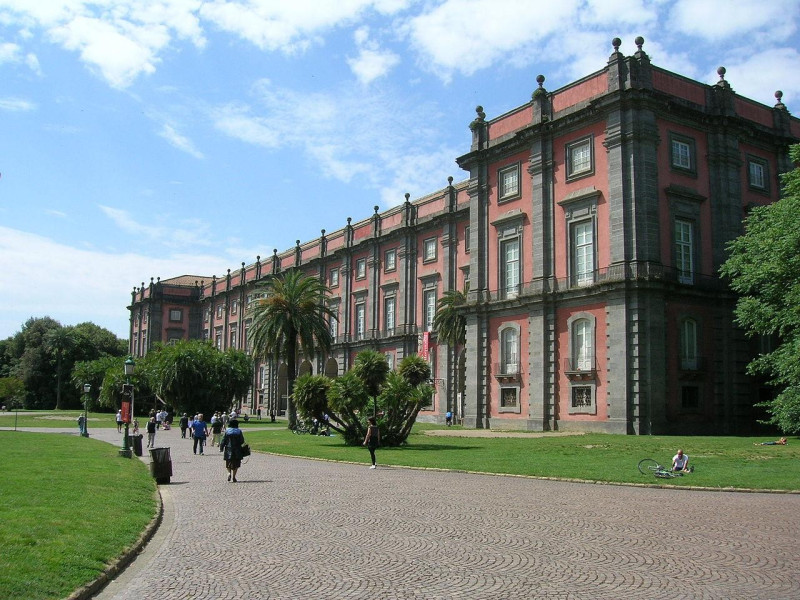Reggia di Capodimonte
The Royal Palace of Capodimonte, historical residence of the Bourbons of Naples, is located on the scenic hill from which it takes its name and from 1957 is also home to the National Museum of Capodimonte. It was Charles III of Spain to order its construction in 1738, entrusting the work to Giovanni Antonio Medrano and Antonio Canevari, in order to house the Farnese Art Collection, started by Pope Paul III in the sixteenth century. The architect Ferdinando Sanfelice also begins the arrangement of the park: an elliptical flattened in front of the building with five main avenues and other minor. The Palace is surrounded by homes, places of worship and locations of factories (tapestries, porcelains, printing and armories). In 1755 the building also became the seat of the "Royal Academy of the Nude", directed by Giuseppe Bonito. With the advent of Joseph Bonaparte and Joachim Murat, for the Royal Palace begins a new phase: devoted to the royal residence and connected to the city by a straight line (then Corso Amedeo of Savoy), it's enriched by the monumental scale and French furniture. The Palace becomes venue events during which the garden is open to the public. The works and neoclassical decorations will be completed during the nineteenth century by Niccolini and Tommaso Giordano, as well as the garden, rearranged in English style. In 1920 the building passes to the State; in 1957 it's designated National Museum. The Royal Palace, with rectangular plan, consists of two bodies side by side and is distributed on two floors: the first preserves the original furnishings of the Royal Apartments ("Alcova painted as Pompeian", "Hall of Cradle", "Hall of Ferdinando IV ", "Ballroom", "Porcelains Hall", "French Halls", "Camuccini Hall"); the second floor, the attic and the mezzanine house the museum collections. The park of the Palace has an extension of twenty-four hundred acres and is home to statues, fountains and numerous buildings, including the "Casina of Principles", the current school for the manufacture of ceramics, the Church of San Gennaro and the hermitage of Capuchins. Since 2012 it also grows agricultural produce.


